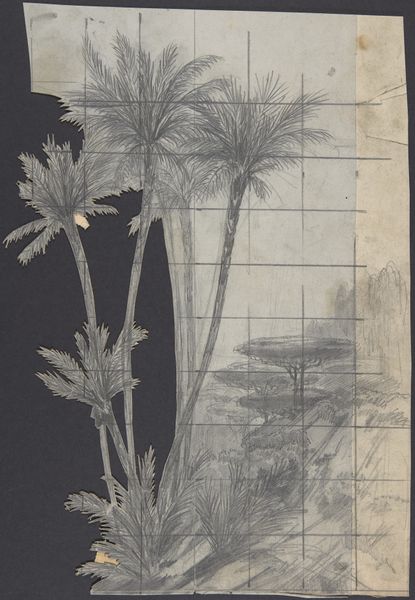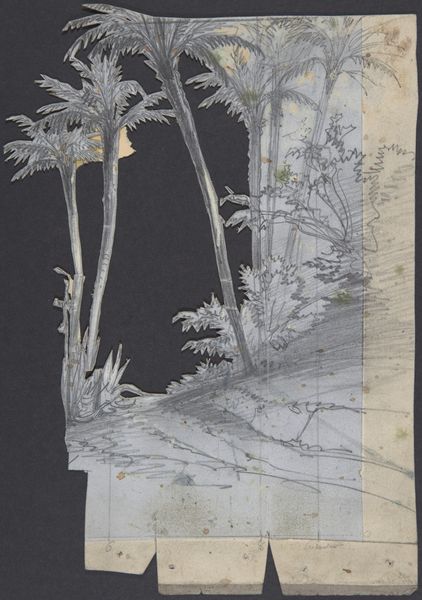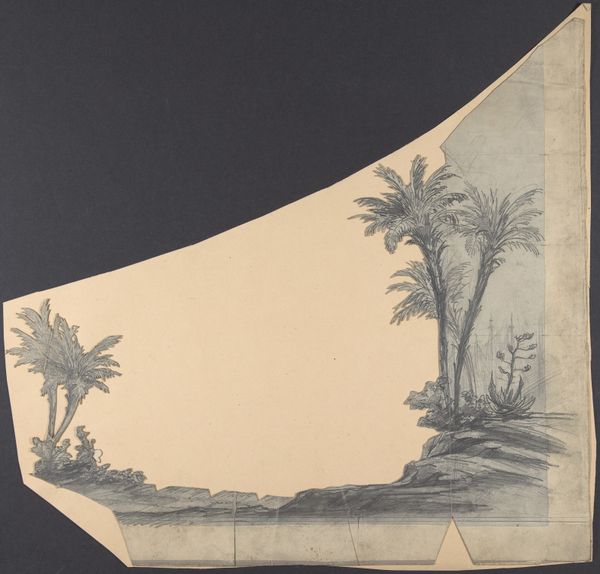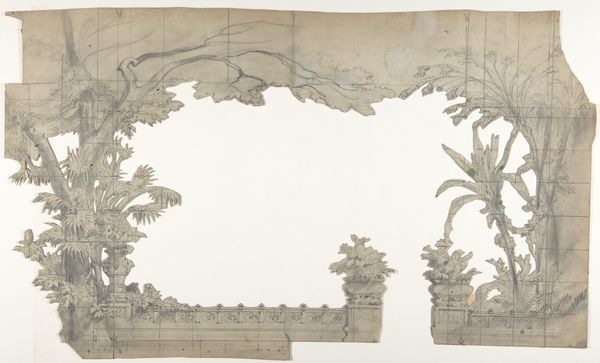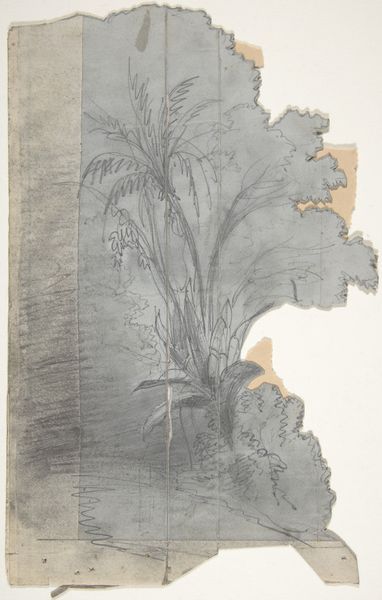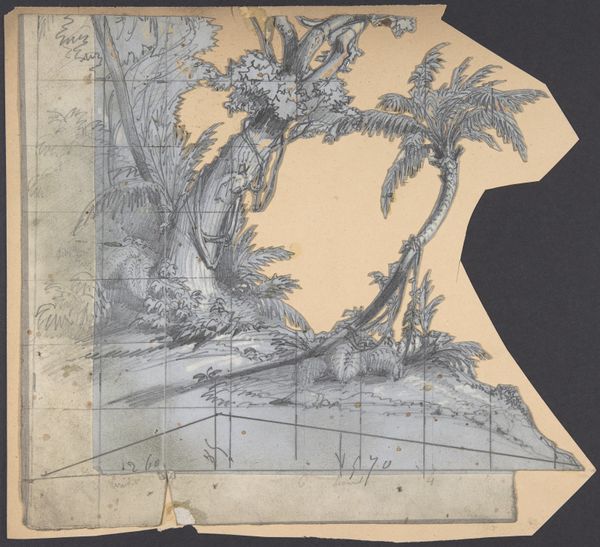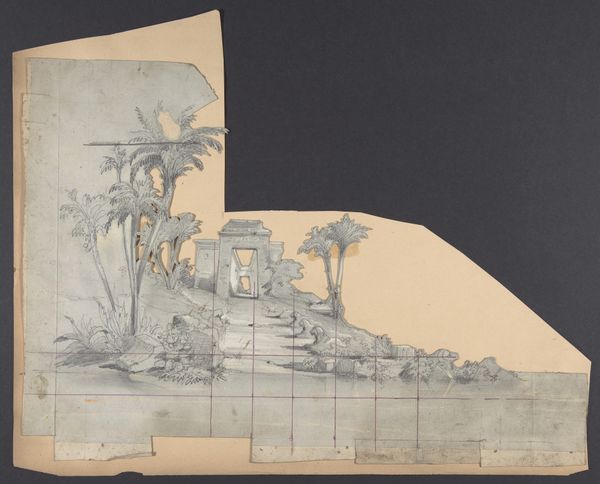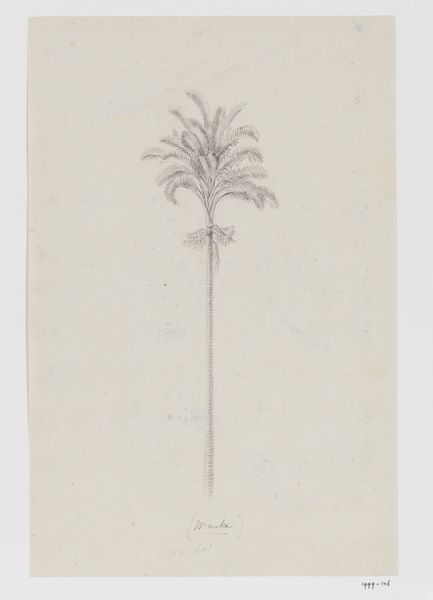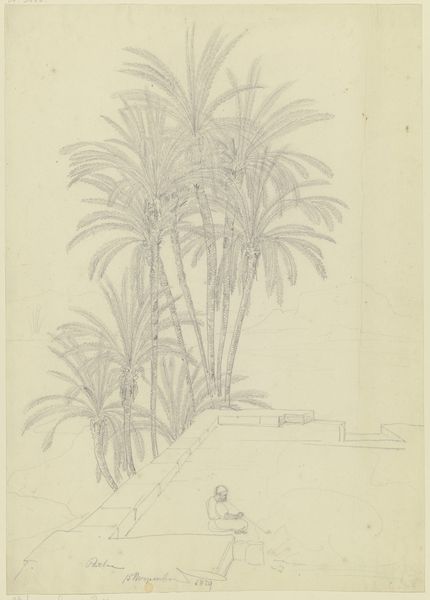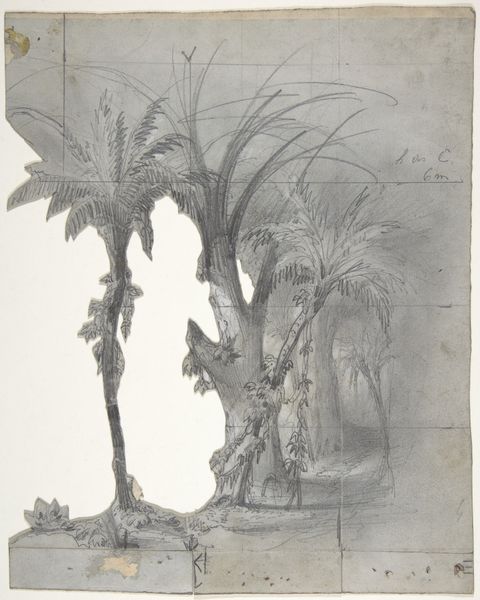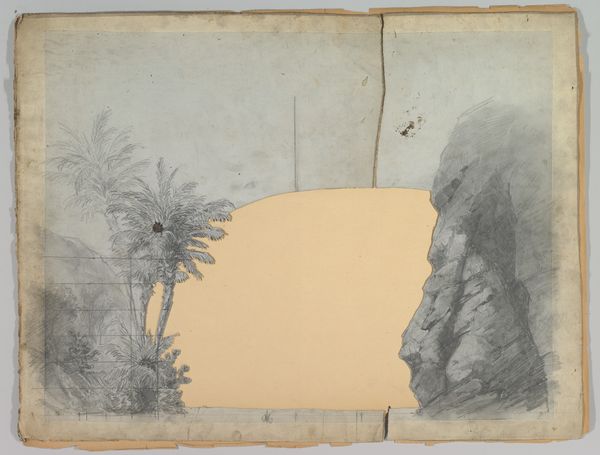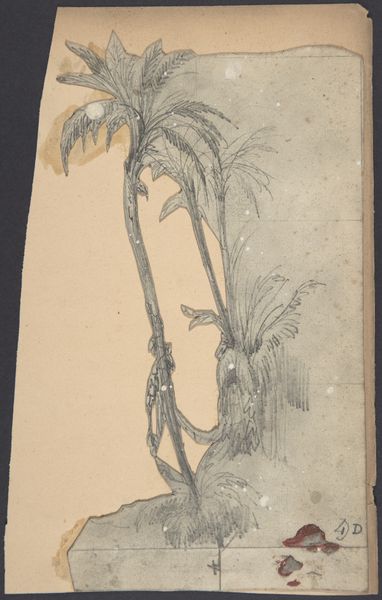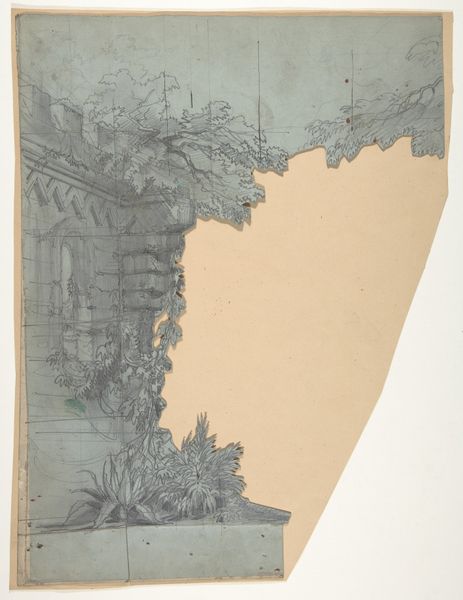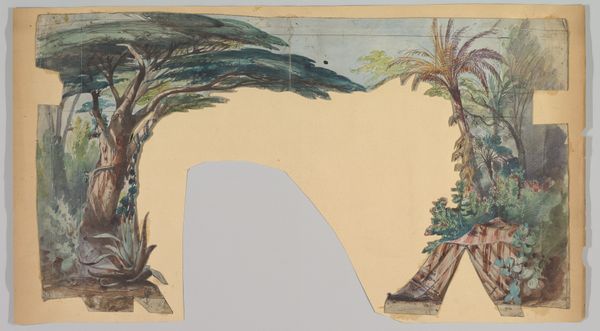
Design for a Stage Set at the Opéra, Paris 1830 - 1890
0:00
0:00
drawing, print, paper, pencil, architecture
#
drawing
# print
#
paper
#
coloured pencil
#
ancient-mediterranean
#
pencil
#
sketchbook drawing
#
cityscape
#
architecture
Dimensions: Irregular sheet: 14 1/4 x 8 9/16 in. (36.2 x 21.8 cm)
Copyright: Public Domain
Editor: Here we have Eugène Cicéri's "Design for a Stage Set at the Opéra, Paris," dating from between 1830 and 1890. It’s a drawing, with pencil and colored pencil, on paper. I’m immediately struck by its delicate, almost dreamlike quality, despite depicting something as grand as an opera stage. What catches your eye when you look at it? Curator: You know, it's like stepping into a memory palace, isn't it? Cicéri’s sketches whisper of forgotten grandeur, a yearning for an imagined past shimmering just beyond our grasp. Those towering structures entwined with palms... don't they evoke a sort of exotic antiquity? It is all an allusion really: to stage, to Opera and to the history these are meant to host. The Ancient world filtered through 19th Century eyes. And do you notice the grid? Editor: I do. It seems so at odds with the organic feel of the rest of the design. Why include it? Curator: Ah, the grid. A behind-the-scenes peek! It reminds us this isn't just a pretty picture, but a working drawing, a blueprint for illusion. Each square probably corresponds to measurements or structural elements, a fusion of art and engineering that makes the spectacle come to life. Editor: That's fascinating! So much practicality hidden within what seems purely imaginative. I guess theatre really is a composite art. Curator: Precisely! It invites a meditation on artifice itself, no? The play between dream and reality, planning and improvisation, what’s exposed, what's hidden, becomes just as potent as the play. Editor: This makes me see the work as so much more than "just" a design. There’s this whole conversation happening between the art and the mechanics of the theatre! Thank you for making me aware of all those things.
Comments
No comments
Be the first to comment and join the conversation on the ultimate creative platform.
